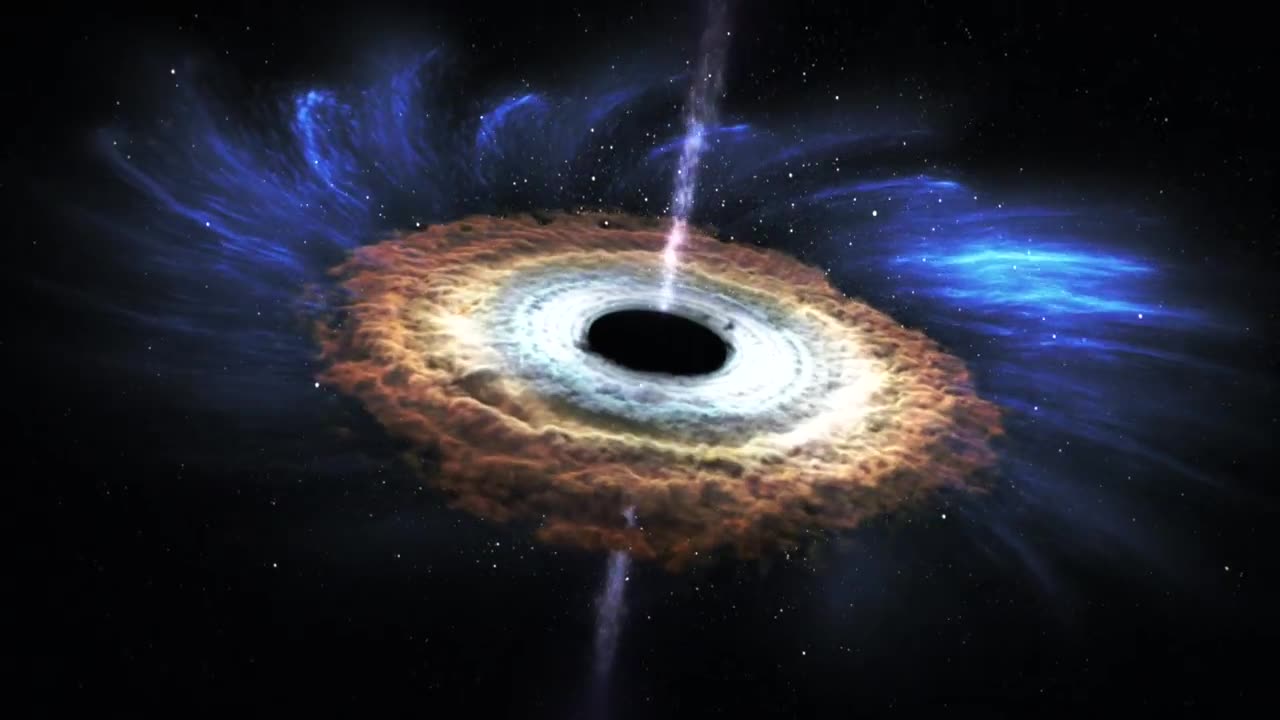Premium Only Content

NASA | Massive Black Hole Shreds Passing Star
NASA | Massive Black Hole Shreds Passing Star
6.2M views · 7 years ago...more
NASA Goddard
1.52M
Subscribe
17K
Share
Save
Report
Comments906
David John
You can tell it is fake because you cannot hear music in space.
Up next
1:31
Supermassive Black Holes on a Collision Course (ESOcast 246 Light)
European Southern Observatory (ESO)•94K views
11:55
Mairaj e Nabi PBUH Aur Black Hole Ka Quran Main Zikar II What Quran Says About Black Hole
Voice Daily•4.2M views
1:21
Peeking at a Distant Moon-Forming Disc (ESOcast Light 240)
European Southern Observatory (ESO)•104K views
4:55
What If You Fell Into a Black Hole?
What If•13M views
4:11
| : gymnopédie au clair de lune - Giovanni Vetrano & Aurora Tresa
Giovanni Vetrano•15K views
0:50
An echo of light
Jaja•9.7K views
1:33
Nasa footage shows how terrifyingly vast black holes are
The Independent•43K views
3:35
Return to the Moon with Orion
ATG Europe•1.5M views
4:36
Artemis-1 - NASA Animation (Version 2)
Matthew Cable•321K views
0:21
Interstellar Black Hole in Unreal Engine
Ammar Keshta•52K views
3:17
(LAST JEDI) Walking on the Moon with (PlayStation VR Headset) Apollo 11 experience
LAST JEDI•16M views
10:55
This is How First Humans Will Survive on Mars
Zem TV•4.8M views
Description
NASA | Massive Black Hole Shreds Passing Star
NASA Goddard
17K
Likes
6,270,996
Views
2015
Oct 21
This artist’s rendering illustrates new findings about a star shredded by a black hole. When a star wanders too close to a black hole, intense tidal forces rip the star apart. In these events, called “tidal disruptions,” some of the stellar debris is flung outward at high speed while the rest falls toward the black hole. This causes a distinct X-ray flare that can last for a few years. NASA’s Chandra X-ray Observatory, Swift Gamma-ray Burst Explorer, and ESA/NASA’s XMM-Newton collected different pieces of this astronomical puzzle in a tidal disruption event called ASASSN-14li, which was found in an optical search by the All-Sky Automated Survey for Supernovae (ASAS-SN) in November 2014. The event occurred near a supermassive black hole estimated to weigh a few million times the mass of the sun in the center of PGC 043234, a galaxy that lies about 290 million light-years away. Astronomers hope to find more events like ASASSN-14li to test theoretical models about how black holes affect their environments.
During the tidal disruption event, filaments containing much of the star's mass fall toward the black hole. Eventually these gaseous filaments merge into a smooth, hot disk glowing brightly in X-rays. As the disk forms, its central region heats up tremendously, which drives a flow of material, called a wind, away from the disk.
-
 1:28:26
1:28:26
vivafrei
4 hours agoTrump to PAY Illegals to LEAVE? Bill to Ban Boycott PULLED? "Terror" Attack Foiled in UK & MORE!
66K13 -
 LIVE
LIVE
Tucker Carlson
1 hour agoBen of Ben & Jerry’s Exposes the Motives Behind War With Russia & the Politicians That Sold Out
4,874 watching -
 LIVE
LIVE
Dr Disrespect
6 hours ago🔴LIVE - DR DISRESPECT - TARKOV ALL DAY
2,614 watching -
 LIVE
LIVE
Page Six
3 hours agoMet Gala 2025 red carpet arrivals | Watch live
159 watching -
 1:25:50
1:25:50
Redacted News
2 hours agoBREAKING! Netanyahu Readies War with Iran after Houthi Airport Attack, Will U.S. Join In? | Redacted
62.9K63 -
 40:53
40:53
Kimberly Guilfoyle
8 hours agoTrust Trump: Latest News From Washington | Ep.219
27.6K11 -
 LIVE
LIVE
LFA TV
19 hours agoLFA TV LIVE STREAM - MONDAY 5/5/25
930 watching -
 14:56
14:56
PewView
1 hour ago $0.26 earnedMy next EDC? UL comp VS UL Pro!
7.23K -
 19:59
19:59
Adam Does Movies
2 hours ago $0.19 earnedThunderbolts Spoiler Talk - This Is Fixing The MCU!
7.16K -
 57:28
57:28
The Officer Tatum
2 hours agoLIVE Black Father UNALIVES Officer In RETALIATION To Son's Death, + MORE EP 101
12.2K6